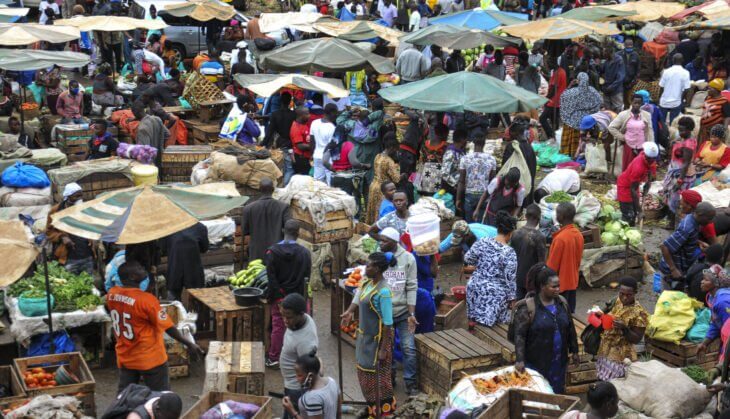
Our Projects are
Transforming African Trade
Quick Contacts
2nd Floor, Fidelity Insurance Centre Waiyaki Way, Westlands

East African Community women traders have been the worst-affected by border closures, with trade declining by more than 50%.
This is one of the unintended consequences of a lack of a regional approach to COVID-19 containment measures, which have caused havoc in the region’s major trade routes. Those in trade have termed this COVID-19 nationalism.
When regional borders closed, only formal freight was allowed. “In our region, there is a significant amount of cross-border trade, which is primarily carried by women traders,” says Abhishek Sharma, a senior director of transport at TradeMark Africa.
In the aftermath, dramatic contractions were seen in the women-driven cross-border trade. “The trade declined by more than 50% and around 60% in Kenya. The impact was hardest on them,” according to Sharma.
TradeMark is an acronym for trades and market East Africa and is a multi-donor vehicle. It has a presence in 13 countries and most of its work is focused on the East African Community and the Horn of Africa. It has started initiatives in Malawi, Mozambique and Zambia.
TradeMark Africa specialises in infrastructure and trade facilitation, and works with the private sector and governments. Its headquarters are in Nairobi.
It is now working on a $23m COVID-19 intervention funded by Canada, Denmark, European Union, Netherlands, Finland, the UK and the US. Most of the money will go towards border and port safety initiatives.
The money will also fund food security and access to medicines, and preventing job losses and building resilience.
“We are helping create safe trade zones at the borders, which will allow women traders to come and trade within protocols,” says Sharma.
When COVID-19 took hold, governments in the region introduced containment measures. But struggled with implementation because of systems, human resource and equipment issues.
The Port of Mombasa, the busiest port in East Africa, handles around 27 million tonnes of cargo and more than one million containers.
In the wake of COVID-19, however, the import cargo fell around 4.5%. Exports dropped around 1.3% and transshipment cargo declined about 18.3%. “The next rounds of reductions in exports and imports are likely to be seen because of declining demand in our countries,” cautions Sharma.
During the early stages of COVID-19, there was limited availability of personal protective equipment (PPE) for staff at the key trade ports and border posts.
The staff were getting exposed to infection risk. At the Port of Mombasa, 34 infectious cases were discovered and there have been a few deaths.
The borders of Busia and Malaba, the key trade routes between Kenya and Uganda and which carry the maximum traffic in the region, have experienced significant challenges.
“There, we have seen import trucks have declined 51% at Malaba and around 50% at Busia. Exports have declined along similar margins,” says Sharma.
But transit times have increased up to 60%.
“The issues we are seeing in our trade corridors … [include] truck tailback. There are massive lines. The tailbacks have been around 20km on average, but have shot up to 60km on some days. A lot of these tailbacks are because of the containment measures,” explains Sharma.
Although there was a regime of compulsory testing at borders, there was limited availability of testing kits.
The borders, which work 24 hours, started to operate for a few hours a day as drivers waited for test results. The tests, in turn, were processed through capital cities because there wasn’t enough testing infrastructure at the borders.
The $23m COVID-19 intervention will go towards addressing these issues.
“We are [giving] support to enable faster testing. We have, along with the East Africa Community, developed a driver tracking app,” says Sharma.
There are now designated seclusion zones, or quarantine centres, for drivers. At destinations, warehousing protocols have been put in place for the safe movement of goods.
“Through this, we are hoping to reduce the additional time and costs that have come about because of the challenges of COVID-19.” In addition, Sharma notes they are working on a “corridor-based approach”, that includes “looking at all the countries we are working in. One of the biggest problems is COVID-19 nationalism has crept in our region.”
Read the original article
Disclaimer: The opinions expressed herein are the author’s and not necessarily those of TradeMark Africa.
Disclaimer: The views and opinions expressed in this article are those of the authors and do not necessarily reflect the official policy or position of TradeMark Africa.